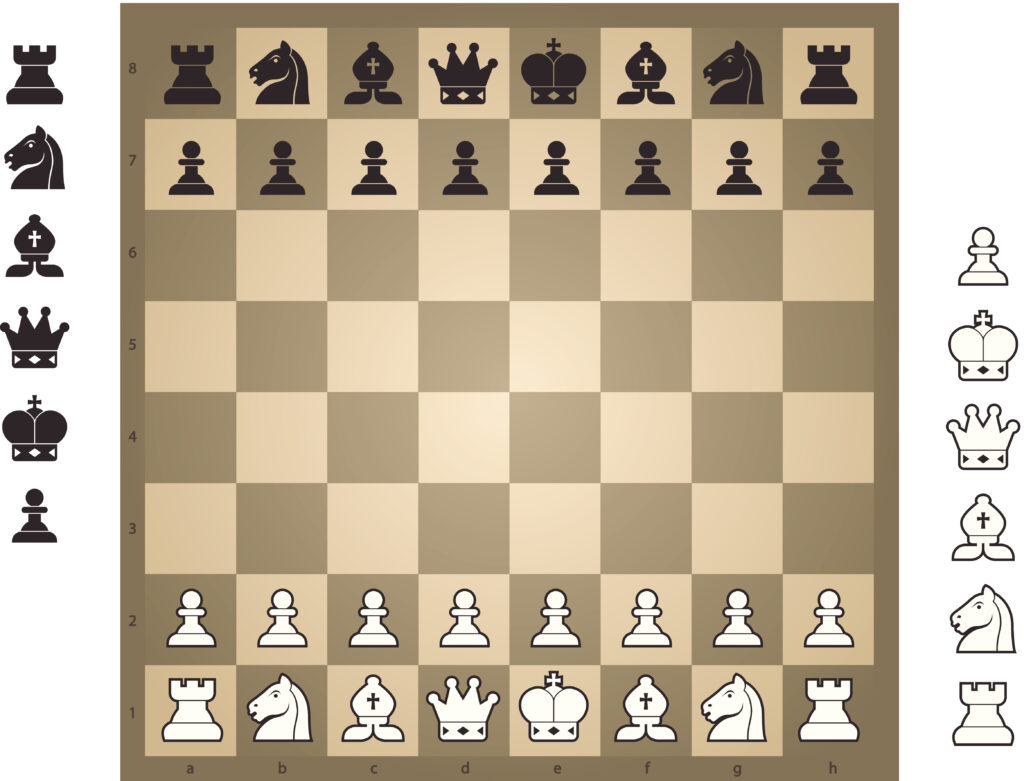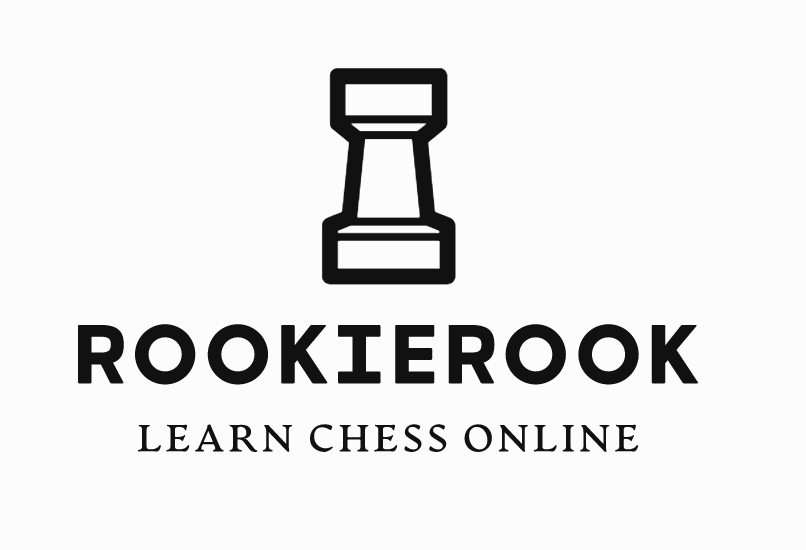Want to learn the rules of chess online for free?
Then you’ve come to the right place.
In this segment, we will show you the very basics of the beautiful game of chess. How do chess pieces move? What’s castling? And how do I make “En passant”?
How do chess pieces move?
The King
The King can move one square in any direction (horizontally, vertically, or diagonally), unless the square is already occupied by a friendly piece, or the move would place the king in check.
The king may never move himself into check (where he could be captured). When the king is attacked by another piece this is called “check”.
The Queen
The Queen can be moved any number of unoccupied squares in a straight line vertically, horizontally, or diagonally,
Due to it’s possibilities in moving in any direction for an infinite number of unoccupied squares, many consider the Queen to be the most powerful chess piece in the game of chess.
The Rooks
The Rooks moves horizontally or vertically, through any number of unoccupied squares (see diagram).
The rook cannot jump over pieces. As with captures by other pieces, the rook captures by occupying the square on which the enemy piece sits.
The Pawns
The Pawns does not capture in the same direction that it moves.
A pawn captures diagonally forward one square to the left or right. The capturing pawn moves to the square over which the moved pawn passed and the moved pawn is removed from the board.
The Bishops
The Bishops moves in any direction diagonally. Chess rules state that there is no limit to the number of squares a bishop can travel on the chessboard, as long as there is not another piece obstructing its path.
In a standard game of chess, you have 2 bishops, one for the white and one for the black squares:
The Knights
The Knights moves unconventionally compared to other chess pieces. Whereas other pieces move in straight lines, knights move in an “L-shape” or a reverted L shape.
Watch the video to learn more:
How to properly set up and start a chess game
Step 1:
Set up the pieces according to the picture listed by this segment. If you’re about to play a classic game of chess. the chess pieces are then arranged the same way each time.
The second row (or rank) is filled with the pawns. The rooks go in the corners, then the knights next to them, followed by the bishops, and finally the queen, who always goes on her own matching color (white queen on white, black queen on black), and the king on the remaining square.

Step 2:
The player who is using the. white pieces is the one who starts the game by moving one of their pieces. If you’re not sure in how the pieces move, please watch the videos that we previously have mentioned.
How to get out of a check
There are only three ways a king can get out of check:
- Move out of the way (Can’t castle the king out)
- Block the check with another piece or
- Capture the piece threatening the king with the check
How to do a checkmate
The purpose of the game is to checkmate the opponent’s king. This happens when the king is put into check and cannot get out of check.
How to Castle in Chess
The only move in chess which allows you to move two pieces at once.
There’s some things that could make your wish to castle illegal, so if you read this segment you know when you are allowed and when you are not allowed to do the amazing castling move.
This move allows you to do two important things all in one move: get your king to safety and also activate your rook (When you move a piece from it’s original place it’s called to activate the piece)
What are the criteria for you to be able to make a legal castling move?
- it must be that king’s very first move
- it must be that rook’s very first move
- there cannot be any pieces between the king and rook to move
- the king may not be in check or pass through check
Since you have two rooks, you’re able to make it on the “Kings side” or the “Queens side”.
No matter which side you’d like to castle, you need to move your knight and bishop. Once you’re able to do the castling.
The king only moves 2 squares, no matter which side you chose to castle on.
En passant
One of the most difficult rules about the pawns is the rule called “en passant”. Which is a french phrase for “in passing”. If a pawn moves out two squares on its first move, and by doing so lands to the side of an opponent’s pawn (effectively jumping past the other pawn’s ability to capture it), that other pawn has the option of capturing the first pawn as it passes by.
Promotion of pawns
How to promote pawns in chess
If you manage to get one of your pawns in to the last square on the other side of the chess board, you’ll be able to promote the pawn in to another piece, with the exception of keeping the pawn or promoting it to a king.
Move on to Chess openings
Now that you know how all the chess pieces move, what the rules are… you must be ready to move on to watch some of our chess openings. Why not check out the Scholars mate, where you can learn how to execute a checkmate within just 4 moves!
